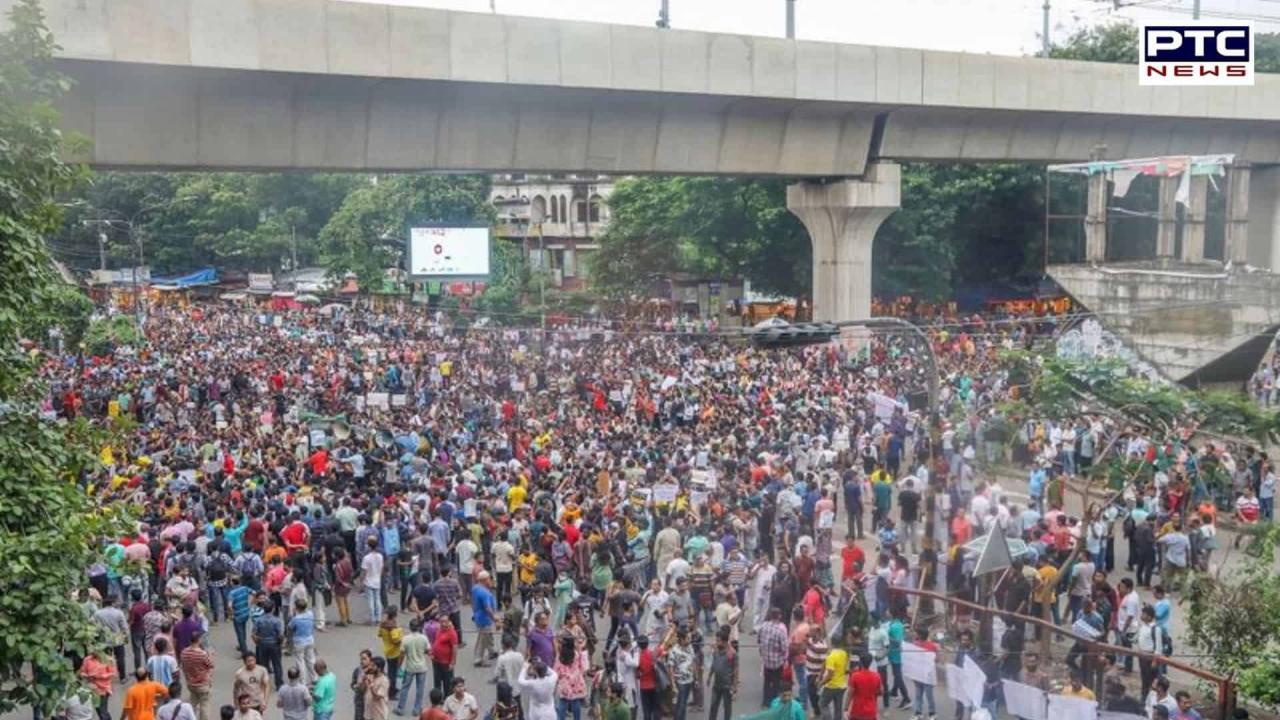- February 23, 2025
- Updated 2:22 am
Hindus in Bangladesh face unrelenting attacks: Vulnerable targets, stark realities
- 65 Views
- admin
- August 13, 2024
- Latest News
PTC News Desk: In the chaotic three days following Sheikh Hasina’s resignation as Prime Minister on August 5, Bangladesh witnessed an unprecedented wave of targeted violence against its Hindu minority. Over 200 attacks were reported, resulting in the deaths of five Hindus and multiple cases of sexual assault.
Historically, Hindus have been vulnerable in the Muslim-majority nation, but the scale of this violence is exceptional, and the chances of holding the perpetrators accountable seem slim.
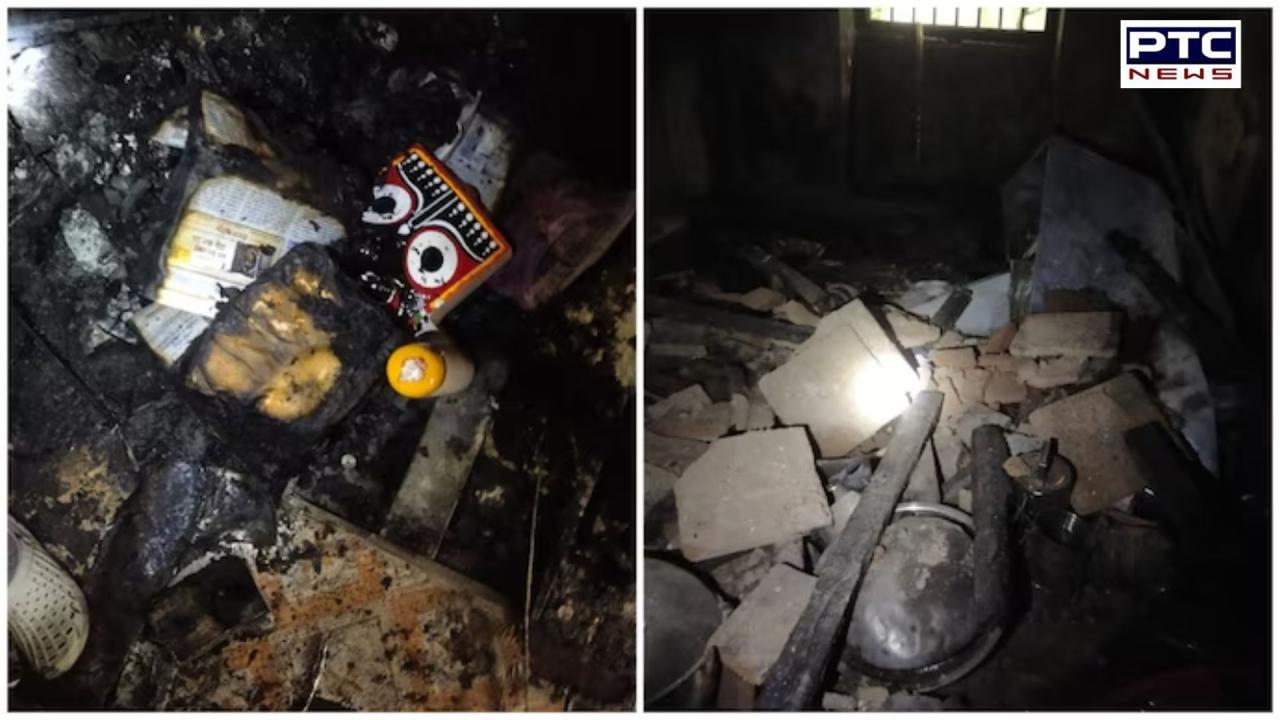
For at least three days, law enforcement in Bangladesh was effectively non-existent. Police officers, fearing for their lives after dozens of colleagues were lynched by angry mobs, refrained from reporting to duty. This lawlessness provided a perfect opportunity for those harboring anti-Hindu sentiments to unleash their hatred.
“Communal sentiments have always been present in Bangladesh. There are people who look for an opportunity to attack minorities, especially Hindus. Even during the Awami League regime, there were attacks on Hindus. Communalism is a hard fact of Bangladeshi society,” said Anupam Debashis Roy, a Bangladeshi author and activist.
While some might argue that the recent violence has a political dimension, targeting members of Hasina’s Awami League and law enforcement personnel, the pattern of attacks suggests a strong communal motive. Temples were desecrated, shops owned by Hindus were looted, and properties were encroached upon, indicating that much of the violence was driven by religious animosity.
Three of the five Hindus who were killed had no apparent connection to politics or the police. For example, Mrinal Kanti Chakraborty, a schoolteacher from Rakhalgachi, was brutally hacked to death, with his wife and daughter also suffering severe injuries. According to Anupam Roy, many victims were ordinary citizens with no political affiliations, and he attributes these attacks to deep-seated “Hindu hatred.”
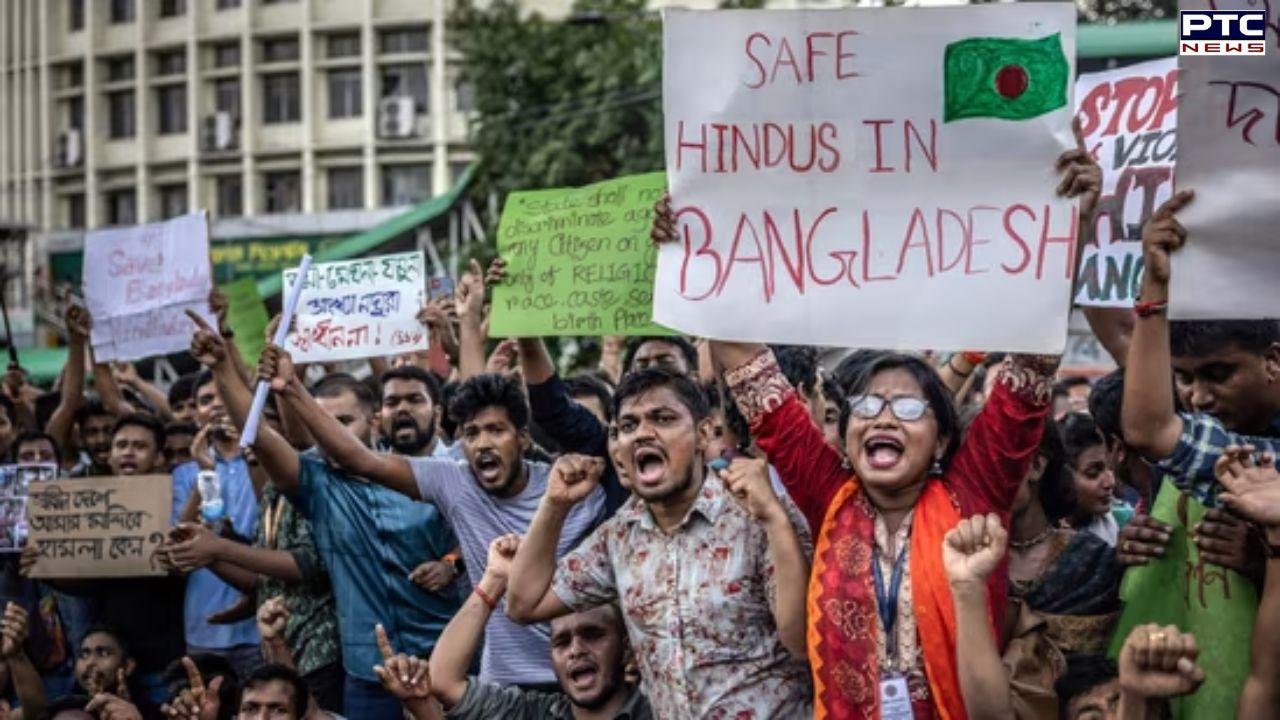
The Bangladesh Hindu Buddhist Christian Unity Council has documented 205 instances of attacks on Hindus between August 5 and 8. However, this figure doesn’t fully capture the extent of the violence, as many incidents involved the targeting of multiple homes and businesses, resulting in hundreds of individual attacks.
Among the most frequent targets were Iskcon and Durga temples, and in Dinajpur district, a crematorium was seized by miscreants. The attacks primarily involved assault, arson, and looting, with the seizure of Hindu properties being a key objective.
However, it’s important to approach reports of the violence with caution. Fake videos and images have been circulating on social media, and it would be premature to conclusively identify any specific outfit or political party as being behind the attacks without a thorough investigation. This is precisely what the Hindu community in Bangladesh is demanding—a fair and comprehensive inquiry to bring the perpetrators to justice.
THE HISTORY OF VIOLENCE AGAINST HINDUS IN BANGLADESH
“Bangladesh has a decades-long history of low-intensity communal tensions and the opportunistic economic subjugation of Hindus. The most common form of discrimination is land grabs targeting poor Hindu communities,” explains Shafquat Rabbee, a Bangladeshi-American political analyst, in an interview with mediapersons.
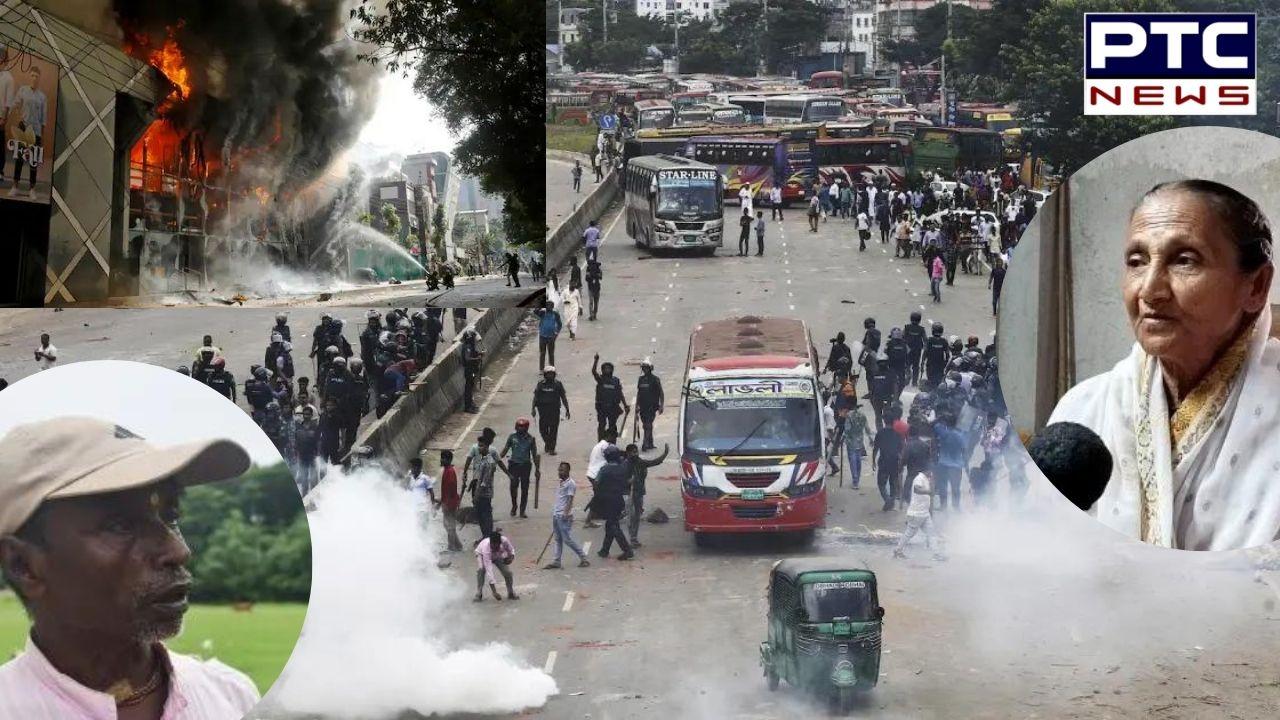
This ongoing marginalization of minorities in Bangladesh is evident in the dramatic decline in the Hindu population over the years. The Hindu population in Bangladesh has dropped sharply, from 22 per cent in 1951 to just around 8 per cent in 2022. Meanwhile, the proportion of Muslims has risen from 76 per cent in 1951 to over 91 per cent today.
“Rural Hindus are particularly vulnerable to this kind of victimisation, leading to continuous migration and the transfer of assets from Bangladesh to India over the decades, regardless of the political regime in power,” says Rabbee, who also teaches at the University of Dallas.
According to the Hindu American Foundation, more than 11 million Hindus fled Bangladesh between 1964 and 2013 due to religious persecution. An estimated 230,000 Hindus continue to leave the country annually.
Rabbee’s observations hold true, as it is largely rural Hindus who bear the brunt of these attacks. During the recent three days of unrest, most of the violence against Hindus occurred in rural areas, although urban areas were not entirely spared. Chattogram experienced the highest number of attacks, with 16 incidents reported. Other districts with significant attacks on Hindus include Khulna, Jessore, Dinajpur, Lalmonirhat, and Magura.
NO POLITICAL PARTY FOR HINDUS IN BANGLADESH
As the 2024 election approaches, Sheikh Hasina, often depicted as a secular leader and accused by her rivals of being pro-Hindu, sought to gain favour with radical groups like Hefazat-e-Islam. While Hindus are generally seen as supporters of the Awami League, a segment of the community remains loyal to Khaleda Zia’s Bangladesh Nationalist Party (BNP).
“Hindus in Bangladesh believe that in times of unrest, they are the first targets,” says author and activist Anupam Roy.
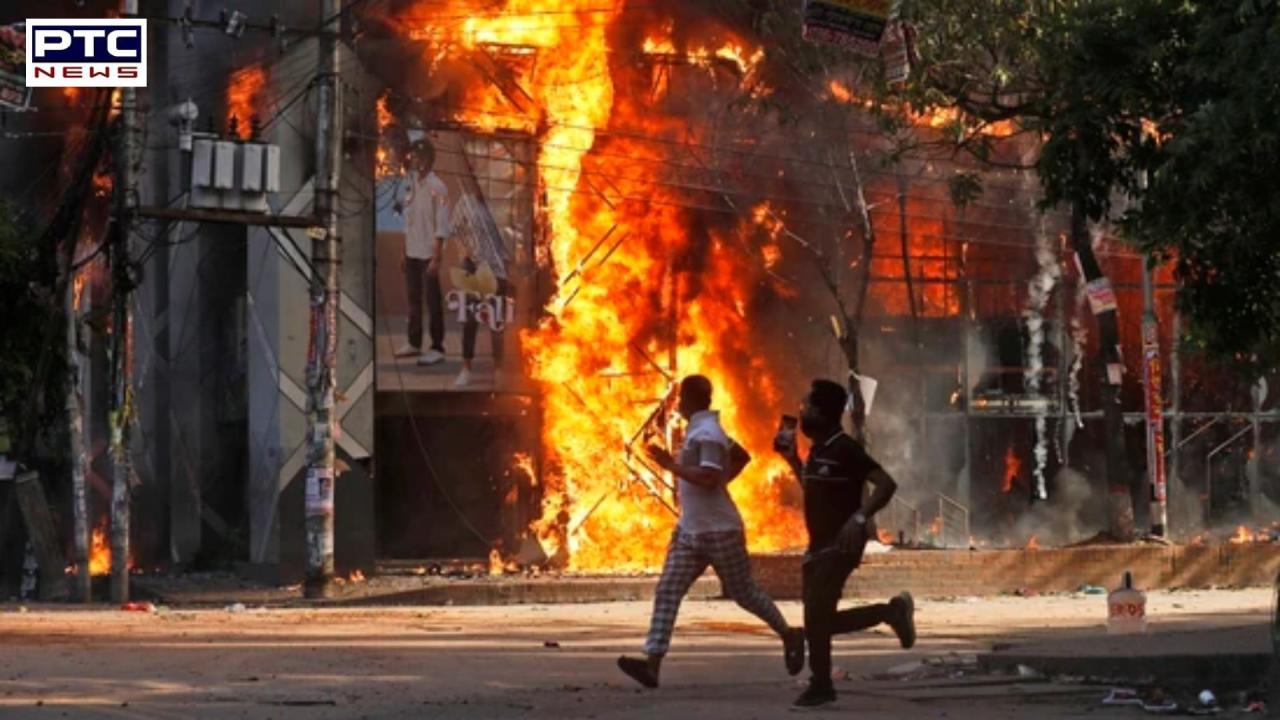
Roy recalls that after the 2018 election, a Hindu woman was gang-raped because she voted for the BNP. He also mentions the 2016 Nasirnagar attacks, which occurred under the Awami League’s rule, where Muslim zealots destroyed 300 houses and injured 100 Hindus over a social media post perceived as critical of Islam. Notably, an Awami League leader was implicated in leading these attacks.
Roy further highlights that during the 2001-2006 BNP-Jamaat regime, Hindus faced severe repression, demonstrating that no political party in Bangladesh has consistently protected the Hindu community.
POLITICS-COMMUNAL OVERLAP IN BANGLADESH, SAYS EXPERT
Experts note a strong correlation between heightened violence against Hindus and volatile political situations in Bangladesh. Political analyst Shafquat Rabbee suggests that this trend necessitates a closer examination to determine how much of the violence is politically motivated versus “truly communal.”
Rabbee explains that in Bangladesh, roughly 40% of the population supports the Awami League, another 40% backs the BNP, and the remaining 20% aligns with parties like Jamaat-E-Islami, Jatiya Party, and other Islamic and Communist factions.
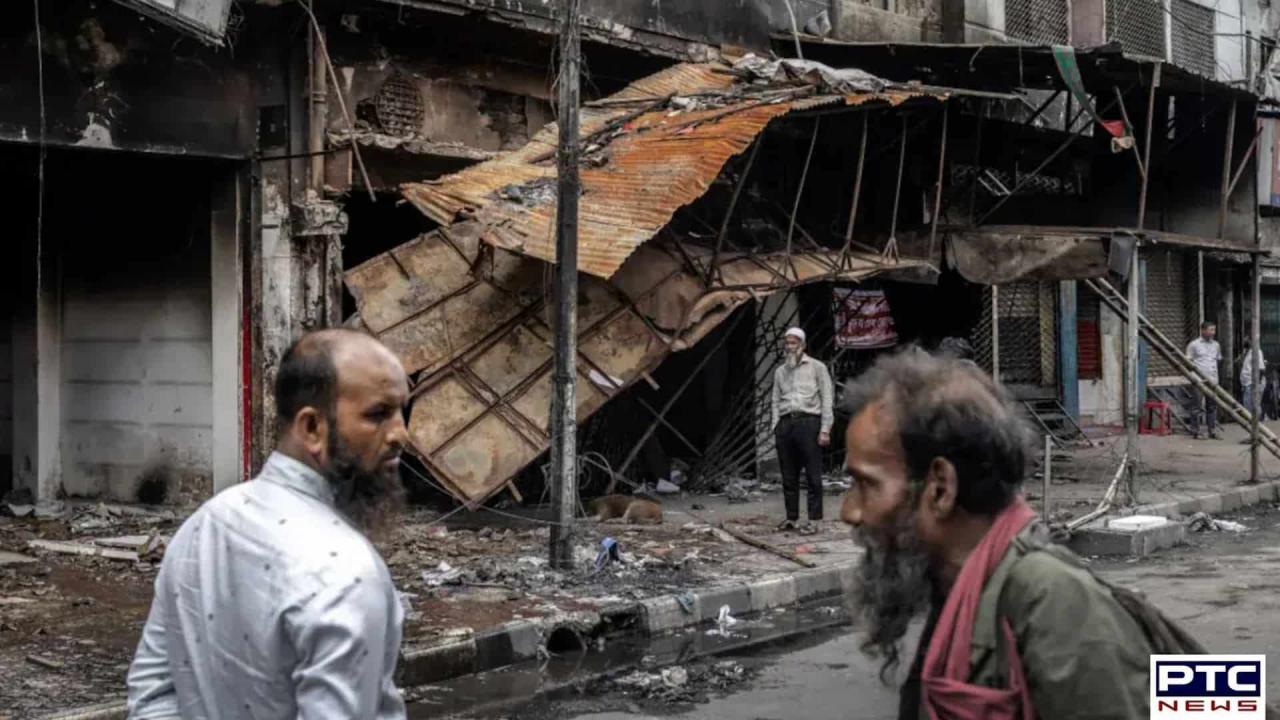
“If you consider Bangladesh’s demographics, about 10% of the population is Hindu, and anecdotal evidence indicates that a large proportion of them support the Awami League,” Rabbee notes.
This implies that nearly 25% of the Awami League’s support base consists of Hindus, and the community is well-represented in the party’s political leadership. Over Sheikh Hasina’s 15-year rule, opportunists from both the Muslim and Hindu communities have demonstrated their loyalty by participating in the violent suppression of dissent, according to Rabbee.
Rabbee further explains that when the Awami League faces street protests, the resulting violence often involves Hindu politicians and supporters, just as it affects their Muslim counterparts. “In such chaotic circumstances, distinguishing between incidents of political revenge and inherently communal attacks is crucial—though none of it can be justified,” he adds.
Dhaka-based author and activist Anupam Roy acknowledges the complexity of recent attacks, noting that while there is a political dimension, many innocent minorities have been targeted purely out of communal hatred. “There are several apolitical Hindus who have been attacked. I know some of these victims personally. These attacks occurred because of Hindu hatred,” Roy asserts.
The situation has left many Hindus in fear, with some too terrified to open their doors without knowing who is outside. “Hindus are shivering. From Dhaka to remote villages, the Hindu minority is deeply frightened,” said Kajal Debnath, vice-president of the Bangladesh Hindu Buddhist Christian Unity Council, in a statement to the Associated Press.
Reports indicate that hundreds of Bangladeshis have reached the Indo-Bangla border, likely attempting to cross into India for safety. Rabbee also highlights the complicating factor of viral misinformation on social media, which further exacerbates tensions.
ATTACKS ON HINDUS IN BANGLADESH AND FAKE VIDEOS
It is undeniable that large-scale attacks on Hindus have occurred in Bangladesh following the resignation of Sheikh Hasina. However, alongside these genuine incidents, there has been a flood of fake videos and images falsely claiming to depict attacks on Hindus, complicating the pursuit of justice and fueling skepticism.
The AFP fact-check unit in Dhaka has identified and debunked many such misleading videos. Journalist Quadruddin Shishir, who works with AFP’s fact-check unit, acknowledges that while there have been numerous attacks on Hindus, social media has also played a significant role in spreading false information.
He cites examples of two viral videos in India: one purportedly showing a Hindu man being stoned while swimming to save his life, which was actually a video of a Muslim Awami League leader; and another claiming to show a Hindu student being harassed and forced to do sit-ups, which was actually of a Muslim Chhatra League activist, the student wing of Sheikh Hasina’s Awami League.
“This kind of false information is primarily spread by Indian X handles and Facebook pages, though a few Bangladeshi accounts are also involved,” says Shishir.
Amid the spread of fake videos, there have also been genuine images shared on social media of Muslims guarding temples and other Hindu properties. However, the over 200 documented instances—many involving multiple Hindu sites and people—highlight that despite these efforts, society as a whole could have done much more to protect the vulnerable.
BANGLADESH HINDUS DEMAND JUSTICE, ASSURANCE OF SAFETY
On August 10 and 11, thousands of Hindus took to the streets of Dhaka, demanding justice and protection in the wake of targeted attacks against their community. Their protests called for those responsible to be held accountable.
Nobel laureate Muhammad Yunus, the head of Bangladesh’s military-backed interim government, is scheduled to meet with Hindu students and activists on Tuesday to hear their grievances. Prime Minister Narendra Modi, in his congratulatory message to Yunus for assuming leadership of the interim government, emphasized the need to protect Hindus in Bangladesh.
On Monday, August 12, Bangladesh’s newly appointed Home Affairs Adviser, Sakhawat Hussain, issued an apology to the Hindu community for the government’s failure to provide adequate protection. “The new government has vowed that there will be no further attacks on Hindus, but we need to see how far this translates into action,” said author and activist Anupam Roy in an interview with IndiaToday.In.
Roy expressed hope that the new government would fulfill its promises by forming an independent commission to hold the perpetrators accountable, compensate the victims, and ensure that such attacks never happen again. He also called for a thorough investigation into allegations that some Awami League leaders may have orchestrated attacks on minorities to create a sense of chaos and highlight the deteriorating situation after Sheikh Hasina’s resignation.
“There is significant political incentive for both the current Yunus government and the BNP to ensure the safety of Bangladeshi Hindus,” said Bangladeshi-American analyst Shafquat Rabbee. “Conversely, the Awami League has a vested interest in labeling any attack on Hindus during the recent unrest as communal violence.”
Roy emphasized the need for a proper investigation to uncover the truth. However, with law enforcement still largely absent and time running out to gather evidence, achieving justice for Hindus in Bangladesh may prove challenging.
Recent Posts
- Crown of goddess Kali, gifted by PM Modi, stolen from temple in Bangladesh
- Hezbollah leader survives assassination attempt amid Israeli strikes that kill 22 in Beirut
- ਕ੍ਰਿਕਟ ਦੇ ਬਦਲੇ ਨਿਯਮ, ਹੁਣ ਇਸ ਕੇਸ ‘ਚ ਦੁਬਾਰਾ ਨਹੀਂ ਮਿਲੇਗੀ ਬੈਟਿੰਗ, ਮੰਨਿਆ ਜਾਵੇਗਾ
- ਸਚਿਨ ਤੇਂਦੁਲਕਰ ਦੇ ਬਰਾਬਰ ਪਹੁੰਚੇ ਜੋ ਰੂਟ, ਪਰ ਵਿਰਾਟ ਦੇ ਇਸ ਰਿਕਾਰਡ ਤੋਂ ਅਜੇ ਵੀ ਦੂਰ
- Ratan tata death: ਸਿਰਫ ਵੋਲਟਾਸ ਹੀ ਨਹੀਂ, ਸਵੇਰ ਤੋਂ ਰਾਤ ਤੱਕ ਤੁਹਾਡਾ ਕੰਮ ਟਾਟਾ ਦੇ ਬਿਨਾਂ ਨਹੀਂ ਚੱਲ ਸਕਦਾ
